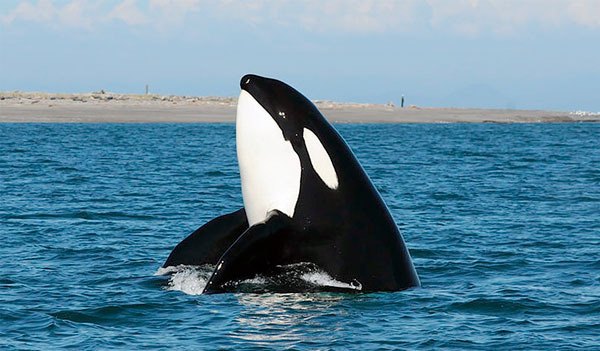This hasn’t been a good year for orca sightings in Puget Sound, and experts are concerned.
Observers have seen fewer Southern Residents in 2016 than in any period since whale extensive orca research began in earnest in the 1970s, according to Orca Network cofounder Howard Garrett. Of the three Southern resident pods, — J, K and L — two have been virtually unseen for nearly six months. L pod has made a handful of appearances, he said.
Conversely, transient orca sightings are on par with past years, which is a switch as Southern Residents are more common in the region.
Biologists believe the reason is largely based on diet; Southern Residents only eat salmon, not seals, and both Chinook and Coho salmon runs this summer and late spring have been sparse. Earlier this year, National Oceanic and Atmospheric Administration Fisheries West Coast region administrator Will Stelle said in a statement that 2016 is “an extremely tough year… Expected returns to the salmon fishery in 2016 are much lower than we have seen in recent years.”
While Southern Resident sightings are commonplace in the fall during the Chum salmon runs, the lack of summer appearances has Orca Network leaders sweating. Their main source of food in the summer is Chinook salmon from the mouths of the Skagit River and Fraser River in Vancouver, and Washington Department of Fish and Wildlife representatives have reported depressed Chinook numbers this year, particularly for wild Chinook as opposed to those raised in hatcheries. Although the orcas can look forward to Chum in the fall, they still have to be properly fed in the summer to make it to the fall or have the ability to reproduce.

“We are very concerned that they could die too young from nutritional stresses or starvation, and that they wouldn’t be able to reproduce and will eventually die out,” Garrett said. “Overall, we’re treading water here.”
The Center for Whale Research in the San Juan Islands has reported skinnier orcas in recent studies, according to Susan Berta, co-founder of Orca Network. Even if they make it to the spring, the lack of nutrition for an entire season could have lasting impacts on overall health, she said.
The summer’s meager food supply also means that Whidbey Islanders hardly get to see their beloved orcas in the summer, as they trek out to the Pacific Ocean in search of food. Garrett is convinced that’s what happened to the J and K pods.
“There is no way around it, Chinook salmon are not doing well,” said Aaron Dufault, salmon specialist at the Washington Department of Fish and Wildlife.
Chinook have been listed as an endangered species since 1994. Although salmon numbers do oscillate between poor returns and plentiful runs, the figures aren’t increasing like they should, Dufault says. This could be due to a number of reasons, including the habitat destruction of dams, particularly on the Snake River, stress from human interaction during fishing and a climate phenomenon known as the Pacific Decadal Oscillation, or PDO.
The PDO is an El Niño-like pattern of Pacific climate patterns that oscillates between warm waters and cold. The survival rates are low during warm years. However, this isn’t the singular reason why the Chinook levels are low, Dufault said.
“I wouldn’t say the Chinook salmon numbers are dire, but they definitely aren’t good,” Dufault said.

